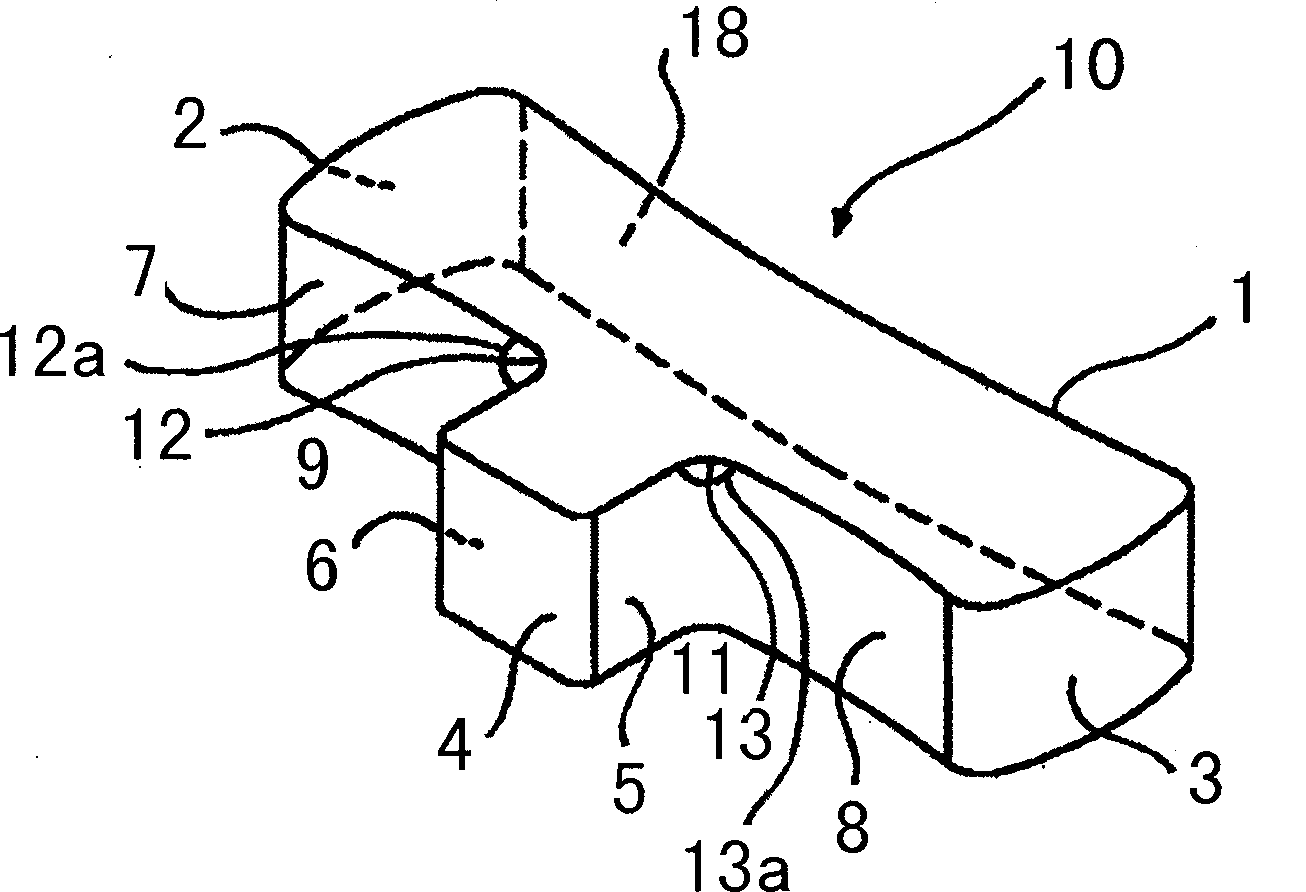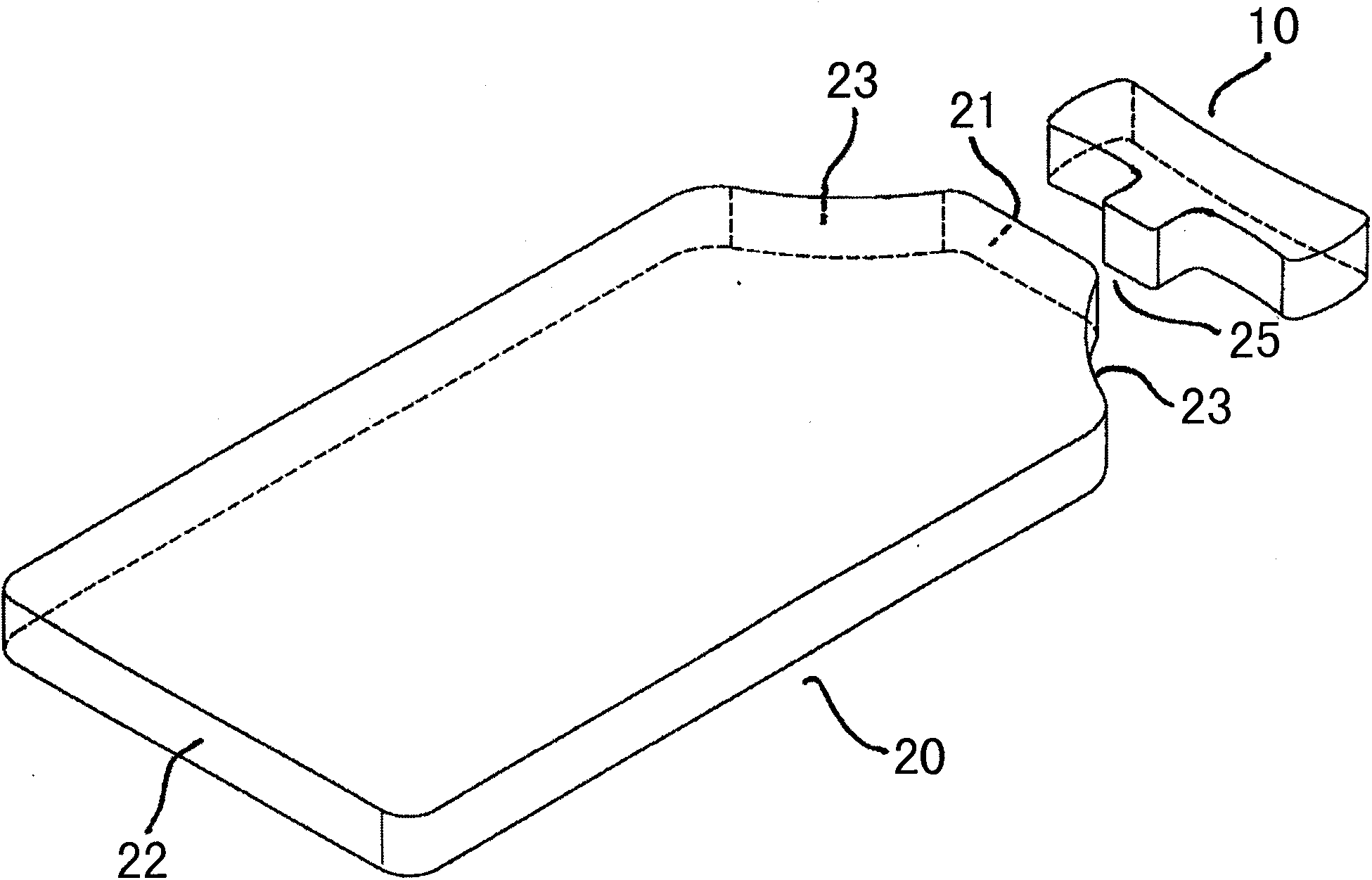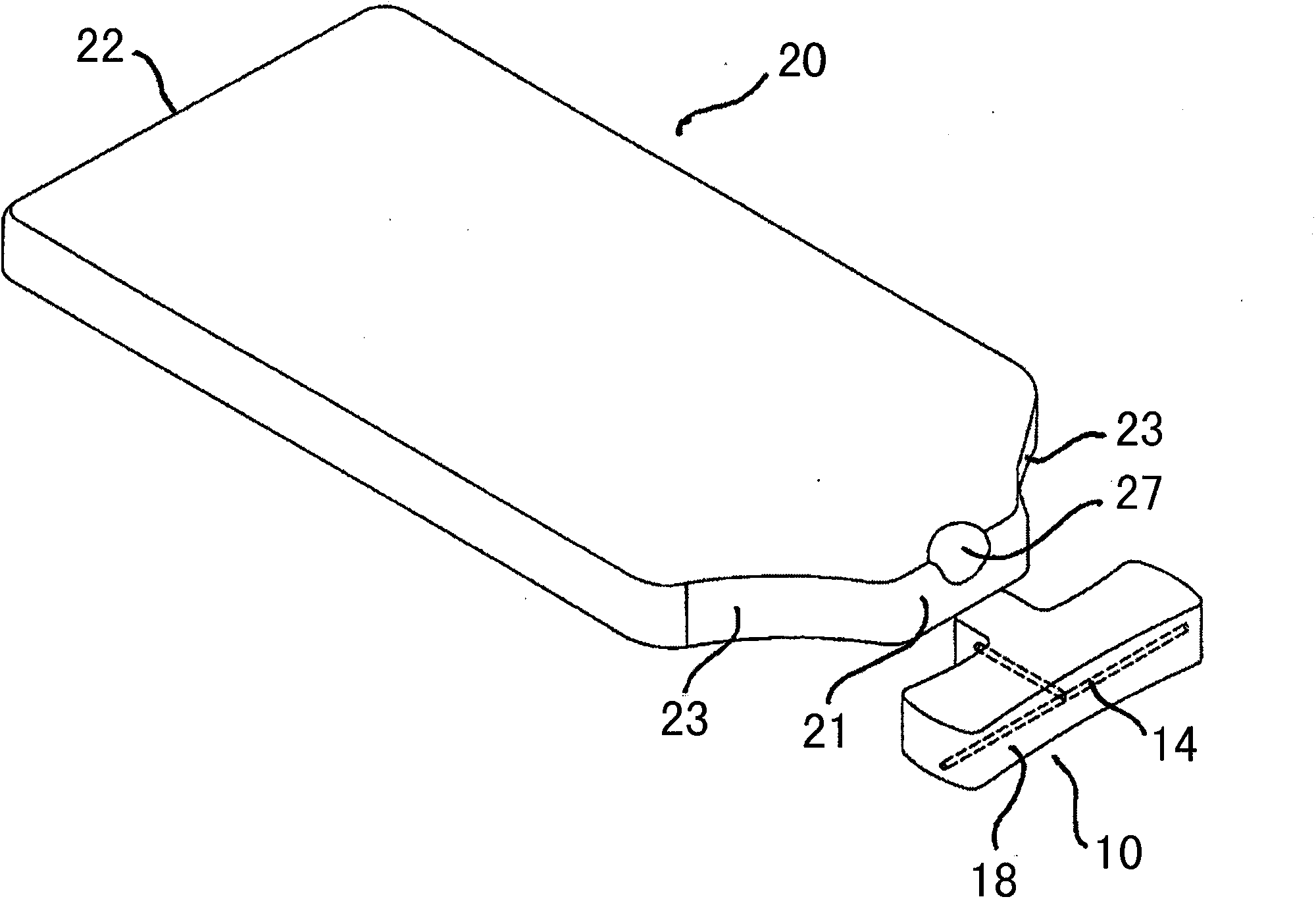Pillow and mattress for reducing snoring and sleep apnea
A technology for pillows and mattresses, applied in the field of sleep pillows and mattress sets, which can solve problems such as lack of support pillows, obstructive sleep apnea, and patient treatment failures
- Summary
- Abstract
- Description
- Claims
- Application Information
AI Technical Summary
Problems solved by technology
Method used
Image
Examples
Embodiment 1
[0116] Foam plastic stock was provided in sheet form with a thickness of 15 cm for mattresses and 12 cm for pillows. The foam has a compressibility factor comparable to standard foam mattresses. A pillow and mattress set according to the invention herein, which is a first head support pillow and a second body support mattress, is manufactured by cutting out the desired form of the pillow and mattress from raw material. Viewed from the top angle, as in figure 2 The pillow in a has a "T" shape, and as shown by image 3 Denoted by b, the mattress is rectangular with recesses for the arms. In the uncompressed state the pillow is 12cm thick and the mattress is 15cm thick. The pillow measured 45 cm in the width direction (the length of the strip portion) and 30 cm in the vertical direction (the direction of the bulge), which was 12 cm long and 10 cm wide. as in image 3 In b, the substantially rectangular mattress measures 80 x 160 cm with recesses 23 for the arms. This pillo...
Embodiment 2
[0122]A study involving 9 patients with obstructive sleep apnea showed satisfactory results in terms of time of nightly use, comfort, and most importantly reduced propensity for obstructive sleep apnea. Successful treatment of obstructive sleep apnea in previous studies was usually explained by at least a 50% reduction in the number of apneas. Medical trials performed on the described pillow and mattress set given here, which showed that: a) 2 patients could not adapt to the prone sleeping position and could not complete the study; b) 7 patients completed the study; c ) the patients studied slept in prone position for 80% of the nights on average; d) 6 of 7 patients reduced the propensity for sleep apnea by more than 50%, and the average reduction was 68%; e) all 7 patients followed the treatment Snoring has been reduced; and f) 1 of 7 patients showed no reduction in apnea propensity.
[0123]
PUM
 Login to View More
Login to View More Abstract
Description
Claims
Application Information
 Login to View More
Login to View More - R&D Engineer
- R&D Manager
- IP Professional
- Industry Leading Data Capabilities
- Powerful AI technology
- Patent DNA Extraction
Browse by: Latest US Patents, China's latest patents, Technical Efficacy Thesaurus, Application Domain, Technology Topic, Popular Technical Reports.
© 2024 PatSnap. All rights reserved.Legal|Privacy policy|Modern Slavery Act Transparency Statement|Sitemap|About US| Contact US: help@patsnap.com










